Continuing on from The New Zealand Tiki Squadrons (1) there were further examples of tiki art in use by the New Zealand military (in both the RAF and the RNZAF) during World War II. Next up is No. 135 Squadron RAF stationed in India in 1943, which flew Hurricanes. It’s not clear exactly how many New Zealanders operated in this squadron but the specific Hurricane pictured was flown by Pilot Officer WH “Hugh” Dean of the RNZAF.
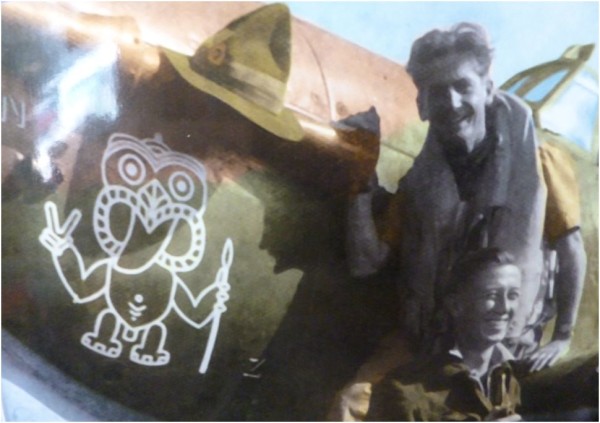
As can be seen above a very pronounced tiki symbol has been used to individualise his Hurricane (most probably a Hurricane IIC). This squadron initially saw action based at Rangoon in Burma from January 1942 before being evacuated to Calcutta, India, during which its aircraft were almost entirely lost to the advancing Japanese. It reformed at Calcutta, flying convoy patrols, then from January 1943 air defence duties and sweeps over Burma until May 1943. After a short period in Southern India as a conversion unit training Blenheim Squadrons being re-equipped with Hurricanes, it resumed air defence duties until being re-equipped with Republic P-47 Thunderbolts from May to August 1944. In October 1944, ground attack missions were resumed over Burma and continued until May 1945, when No. 135 was withdrawn and disbanded, it’s personnel & materiale being reformed as No. 615 Squadron RAF in June 1945.
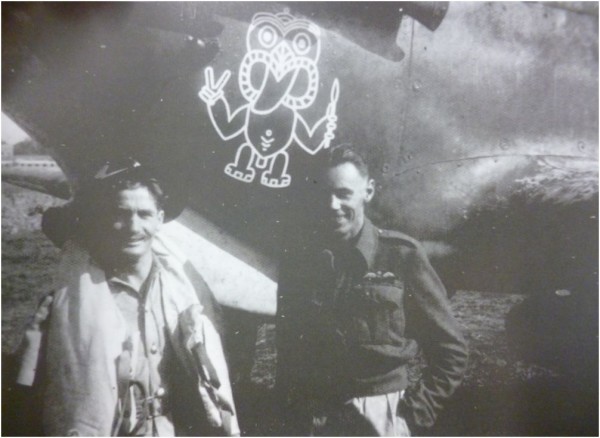
Perhaps one of the more famous New Zealand tiki aircraft (and squadrons) is this Vought F4U-1 Corsair Fighter-Bomber from No. 23 Squadron RNZAF. Known as the “Ghost Squadron“, No. 23 Squadron RNZAF operated from Guadalcanal in late 1944, flying missions against Japanese bases on Bougainville, where it was later based after the island was captured in 1945.
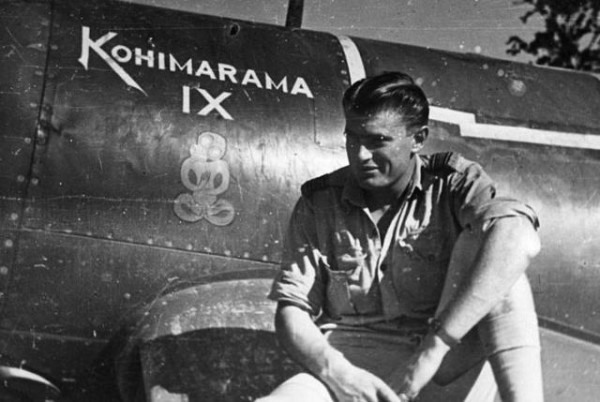
“Kohimarama IX” is an interesting designation, Kohimarama is a beautiful seaside suburb of Auckland known for it’s beach and bay, and as the squadron was formed at Ardmore Aerodrome in South Auckland it’s quite likely a lot of it’s personnel came from East Auckland (which includes Kohimarama). The No. IX may imply the 9th Aircraft of the squadron, with all aircraft being designated ‘Kohimarama’ (e.g. Kohimarama I, Kohimarama II, etc). Alternately it may reflect that the pilot flying her is from Kohimarama and it’s simply the 9th aircraft he has flown during his training and combat operations…? Regardless, this is a very well know RNZAF squadron and aircraft, including the tiki symbolism.
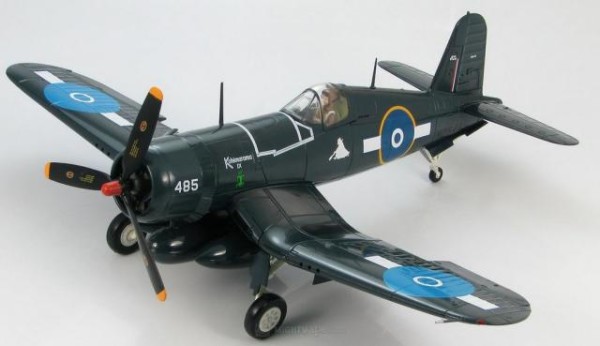
In fact this squadron and aircraft are so well known you can even buy diecast models of this exact aircraft. No. 23 Squadron initially moved to Palikulo Bay Airfield on Espiritu Santo (New Hebrides) to complete training in September 1944. At the end of October 1944 it was posted to Kukum Field on Guadalcanal, where it flew daily bombing missions against Bougainville. In late November 1944 it moved to Momote Field on Los Negros Island to provide fighter defence of the island and was based there until January 1945. In February 1945 the Squadron was back doing fighter-bomber missions based on Guadalcanal, and then on Emirau (in the Bismarck Archipelago) in March–May 1945, and finally Piva Airfield on Bougainville from June–October 1945 where it then disbanded after Japan’s surrender.

One other distinguishing feature of No. 23 Squadron RNZAF was it’s ‘ghost’ (or perhaps ‘grim reaper’) badge shown above (you can see this clearly displayed beneath the cockpit on the die cast model image above).
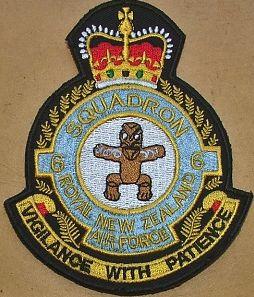
Finally there is No. 6 Squadron RNZAF, formed in New Zealand in February 1942 and based in Fiji and later Espiritu Santo (New Hebrides), which flew long-distance patrols and did sea rescue work using lend-lease Catalina Flying Boats. Its crest (officially adopted in 1954 but likely in use from 1942), depicts the the Māori God Tane showing an attitude of watchfulness in the form he adopted/adopts for sea travel. The squadron motto is “Vigilance with Patience“, obviously originating from it’s long-distance sea patrol origins. Post war No. 6 Squadron RNZAF flew Short Sunderland flying boats as a territorial unit until disbanded in August 1957. It has since been reformed in 2005 to operate the Royal New Zealand Navy’s 8 Sea Sprite Helicopters (both ship and land based), with RNZN flight crews and RNZAF ground crew and logistics support.
So, as can be seen, the presence of tiki pop-culture and the use of polynesian tiki symbolism has been present in New Zealand (amongst Pakeha) for some time, and likely well prior to World War II – and as suggested in my first post, years if not decades before it was in Hawaii (or elsewhere in the USA) – despite claims to the contrary by German author Sven Kirstin. It would be great to find non-military examples of this too – such as postcards, teaspoons, tourist mementos or similar dating from during or pre-World War II, so if anyone can help please drop me a line.
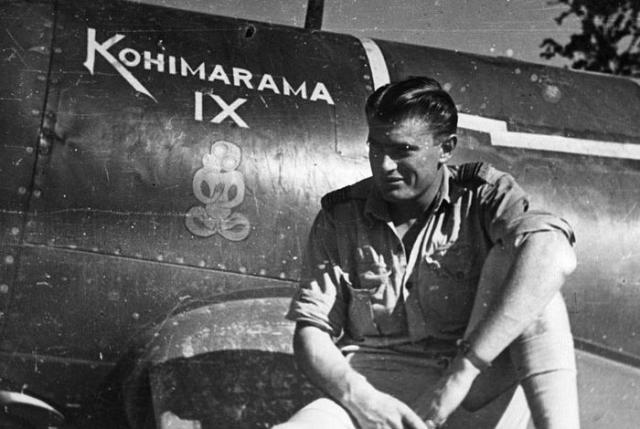
One thought on “The New Zealand Tiki Squadrons (2)”